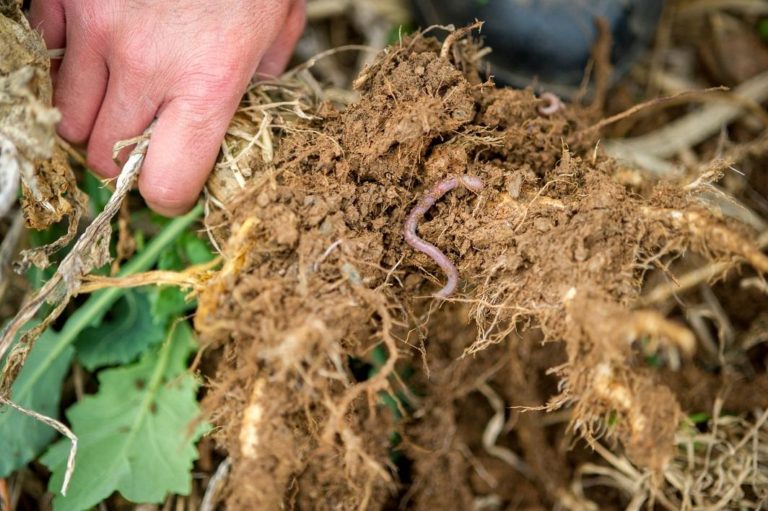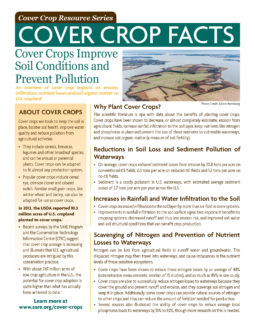An overview of cover crop impacts on soil organic matter.1

Download this fact sheet (PDF). This fact sheet is part of the Ecosystem Services from Cover Crops fact sheet series.
What is Soil Organic Matter?
- Soil organic matter is decomposed organic material (leaves, roots, microorganisms) that exists in the soil and acts as a reservoir of water and nutrients.
- Many analogies have been drawn likening organic matter in the soil to a sponge, a medium in which water and nutrients are stored.
- Soil organic matter is often a measure of a soil’s fertility, and even a soil’s resilience.
Cover Crops Increase Soil Organic Matter
- Cover crops are able to increase soil organic matter by protecting the soil surface from erosion, adding biomass to the soil (especially below the soil surface), and creating a habitat for microorganisms like fungi that contribute to the soil biology and provide more pathways for nutrient management in the soil ecosystem.
- Legume crops were found to increase levels of soil organic matter by 8% to 114%.
- Non-legume cover crops, including grasses and brassicas, were found to increase soil organic matter levels by 4% to 62%.
Soil Organic Matter is a Boon for Water Quality
- By providing these services, cover crops contribute to enhanced water quality because soil organic matter enhances soil processes and properties, including soil structure, and alleviates soil compaction.
- Additions of organic matter also increase water retention capacity, stabilize the soil during extreme weather events like drought or rainfall, and absorb and filter pollutants in runoff.
- Research into the composition of soil organic matter has shown that it’s comprised of about 58% carbon.2 Attempts have even been made to put a dollar value on soil carbon, asserting that restoring soil carbon levels could result in savings of about $25 billion per year.
Summary
Cover crops are a good management strategy for increasing soil organic matter levels, a benefit that also has positive water quality, air quality and soil health implications. Cover crop management decisions are very important in maximizing their benefits, especially the decision to use no-till practices in conjunction with cover crops.
About Cover Crops

Cover crops are tools to keep the soil in place, bolster soil health, improve water quality and reduce pollution from gricultural activities.
- They include cereals, brassicas, legumes and other broadleaf species, and can be annual or perennial plants. Cover crops can be adapted to fit almost any production system.
- Popular cover crops include cereal rye, crimson clover and oilseed radish. Familiar small grain crops, like winter wheat and barley, can also be adapted for use as cover crops.
1 Unless otherwise cited, all data comes from a bibliography compiled by SARE and the University of Missouri.
2 Pribyl, D.W. 2010. A critical review of the conventional SOC to SOM conversion factor. Geoderma. 156(3-4):75:83.
